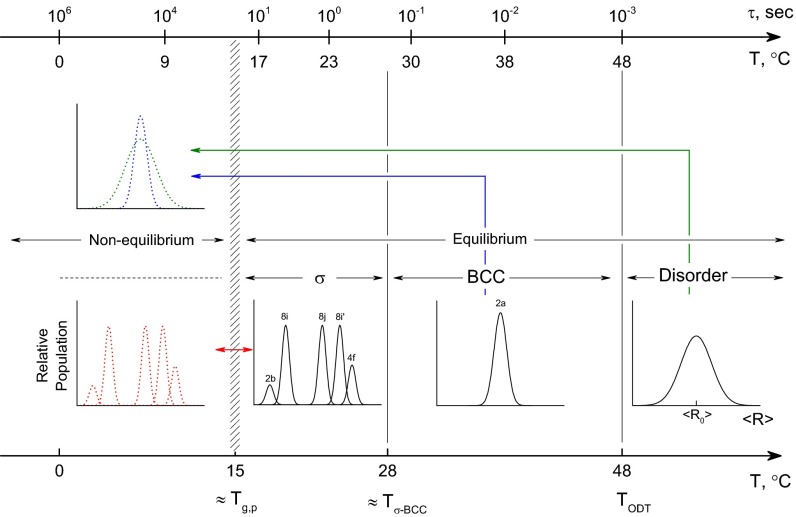Fig. 7.
Symmetry breaking and the exchange of mass in sample IL-15. Transition between the equilibrium BCC and Frank–Kasper σ-phases requires a redistribution of block copolymer molecules from a monomodal population of particles to a distribution of five particle shapes and sizes with a commensurate 15-fold increase in the size of the unit cell. Rapidly cooling the disordered melt below the point of core vitrification (∼15 °C) turns off molecular (mass) exchange leading to a glassy soft solid at T < Tg,p. The arrows between the equilibrium and nonequilibrium states refer to the results shown in Fig. 1. Loss of BCC order upon cooling from 40 to 0 °C (Fig. 1 B and E) suggests a diffusionless transition to a locally structured but globally disordered state before solidification of the core. The upper axis identifies the time constant τ for relaxation of the disordered state as a function of temperature (Fig. 4).

